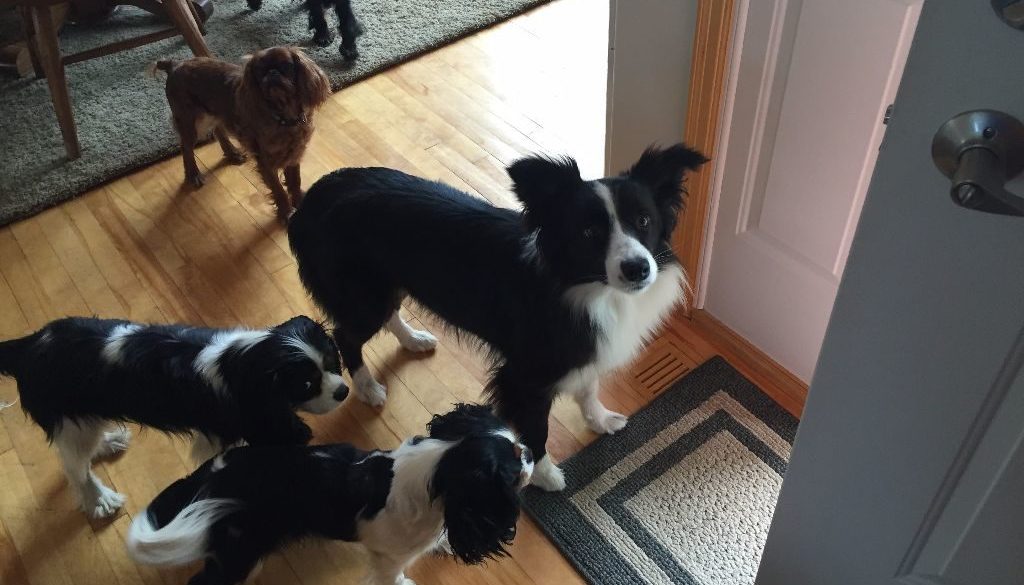Impulse control. It’s definitely a buzz phrase in the dog training world. But what exactly is it? Does your dog need it? Does your dog have it? If not, how do you teach it to your dog?
One great example of impulse control can be seen at any agility trial, where a dog, who has learned to wait or stay at the start line while his handler walks away, does so reliably until given permission to begin running the course. That’s not an easy thing for a dog to do (especially for a high drive dog) given the distractions and adrenaline that are part and parcel of such an extreme situation, which makes it all the more impressive when done successfully.
But even if you never plan to set foot into a performance or competition or working setting of any kind with your dog, impulse control is still an important thing for him to understand, achieve and practice.
Simply put, a dog with impulse control is one that has learned good manners and demonstrates a desire to please and obey. He is a dog that listens to you, defers to you, does what you say when you say it, and stops doing something when you tell him to stop. He is a dog that does not bolt out the front door when you open it, that does not grab a toy out of your hand until you’re ready to play, that waits to eat his meal until you give him permission, that does not jump on you (or your guests) unless invited to do so, that stops barking when you tell him to be quiet, that comes out of his kennel when say it’s ok to do so, and so on. In short, a dog that learns/has impulse control is a dog that is a pleasure to live with.
So how does such a dog come to be? Well, that’s up to you, the owner/trainer.
I’ve said it before and I’ll say it again: you will end up with the dog you’re willing to raise and train.
If you’re willing to teach your dog the behaviors that make him pleasant to be around, to use appropriate consequences that encourage wanted behaviors and discourage unwanted behaviors, and to be consistent with what you will and will not allow, it’s a given that you will have a dog that understands impulse control.
What does that entail? What does that look like? Some examples include (but are not limited to) teaching your dog to sit before you or anyone else pets him (no jumping allowed); having your dog lie down and stay in that position before you feed him a meal; having your dog wait in your car until you get his leash on and give him permission to get out, and then having him sit patiently next to you until you’re ready to move about; having your dog go through doorways after you tell him it’s ok; not throwing a ball, frisbee or any other toy for your dog until he sits – preferably next to you in “heel” position. These little things, to name just a few, are easy habits for any dog to learn and for any owner to help their dog do, without exception, on a daily basis; they are some of the good-manners behaviors that make for a wonderful canine companion.
So teach your dog to be wonderful – to do things that make you and others want to spend time with him. Reinforce those behaviors often enough for them to become learned and habitual, be consistent with both your rewards (positive consequences for positive behavior) and deterrents (consequences your dog does not want to have happen to him) and, before you know it, your dog will start to demonstrate impulse control. The result? A dog that’s even more of a joy to have as a member of your family.







